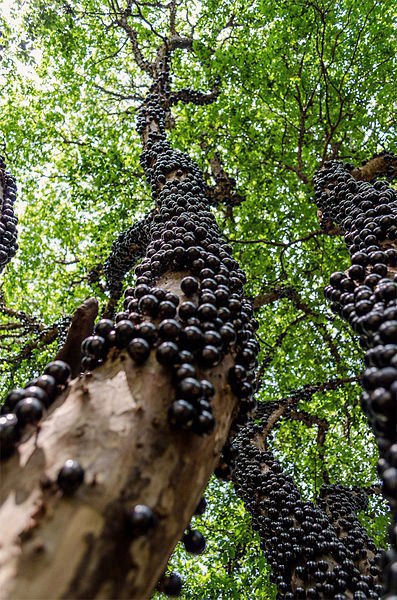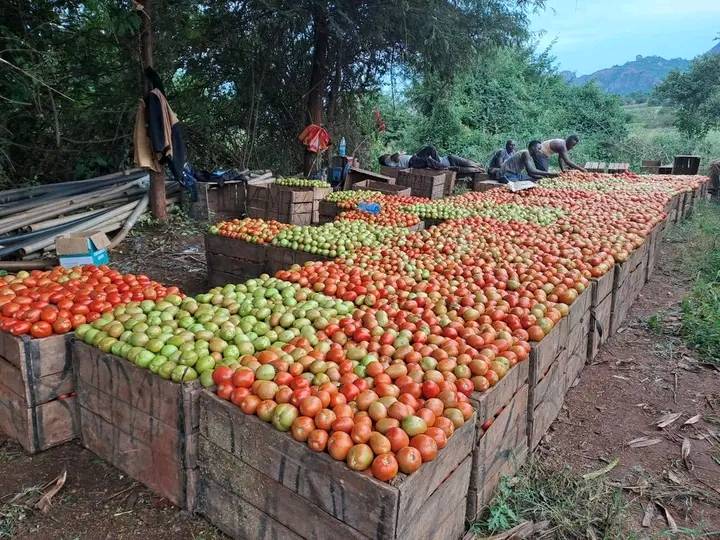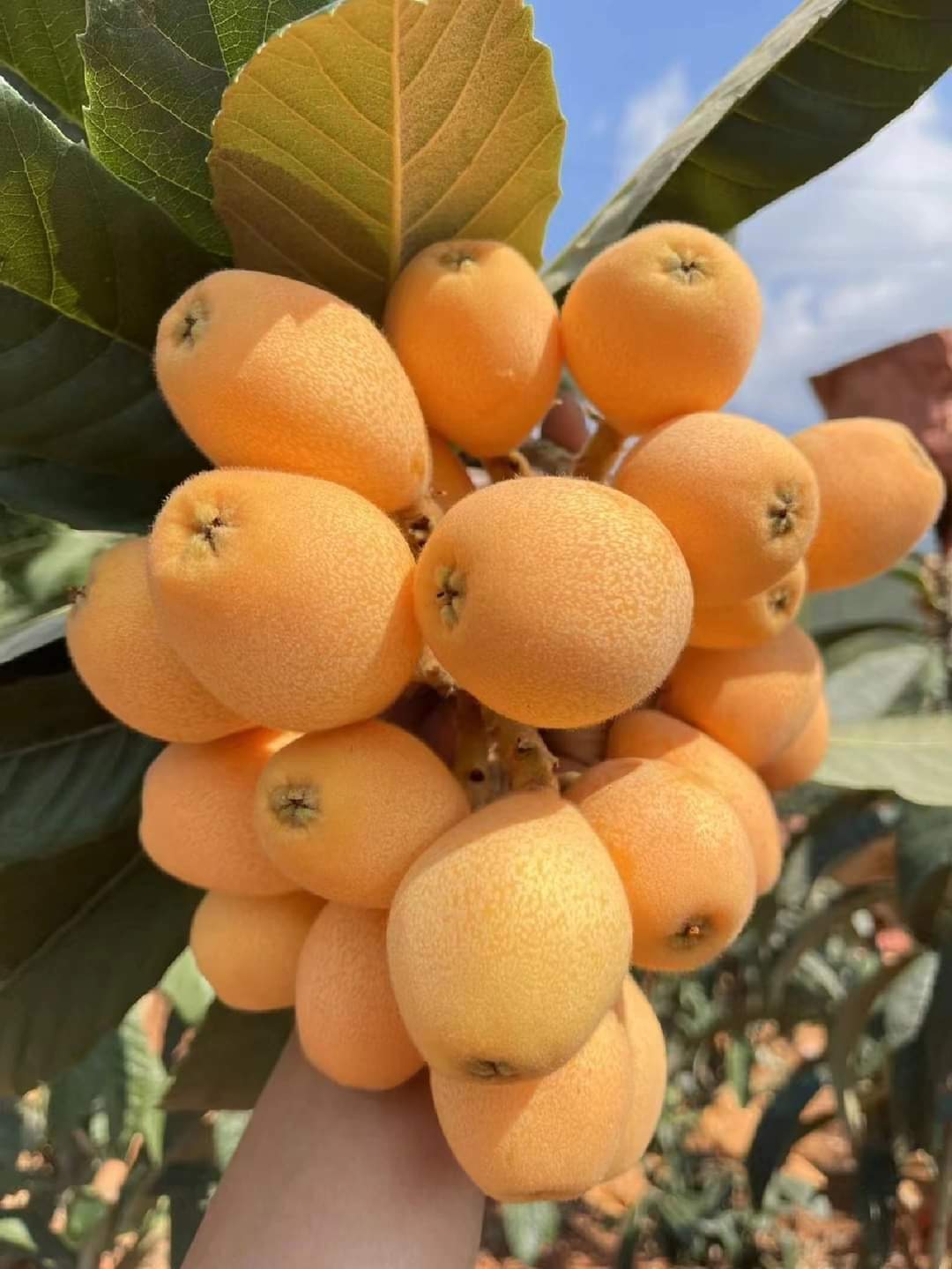A SIMPLE GUIDE ON HOW TO GROW JABOTICABA TREE
The jaboticaba tree, also known as jabuticaba is a small, slow-growing tree native
to Brazil, Argentina, Paraguay, and Bolivia. It is renowned for its unique growth
habit and delicious fruit. One of the most distinctive features of the jaboticaba tree
is its cauliflorous nature, meaning it bears fruit directly on its trunk and larger
branches. It resembles small-dark purple berries, typically around 1-4 centimeters
in diameter, with a thick, tough skin. Inside, they contain a sweet, gelatinous pulp
with several small seeds.
Jaboticaba trees are highly prized for their ornamental value due to their attractive
foliage, dense canopy, and unusual fruiting habit. They are often cultivated in
home gardens and orchards in tropical and subtropical regions worldwide.
However, they can be sensitive to cold temperatures and may require protection or
special care in cooler climates.
THE MARKET FOR JABOTICABA
Market for Jaboticaba fruits can vary depending on factors such as geographical
location, seasonality and consumer demand. Here is an overview of the general
maeket for jaboticaba fruit:
1. Local markets: In regions where jaboticaba trees are cultivated, such as
Brazil, Argentina, Paraguay, and parts of the United States and Australia,
jaboticaba fruits are commonly sold in local markets. These markets cater to
local consumers and may offer a range of fresh produce, including
jaboticaba fruits when they are in season.
2. Farmers' Markets: Farmers' markets provide another avenue for the sale of
jaboticaba fruits, particularly in areas where small-scale farmers grow them.
3. Specialty Stores: Some specialty grocery stores or fruit markets may carry
jaboticaba fruits when available.
4. Online Markets: With the advent of e-commerce, jaboticaba fruits can also
be found for sale through online marketplaces and specialty fruit vendors.
Online sales allow consumers to purchase jaboticaba fruits regardless of
their geographical location, although availability may be limited by factors
such as shipping logistics and seasonality.
5. Processed products: Jaboticaba can be used to make juices, be processed to
products such as jams, jellies, wines and liqueurs. These products may be
sold in specialty stores, gourmet shops and online retailers.
6. Export markets: In areas where Jaboticaba fruits are grown commercially,
they may be exported to international markets to meet demand for exotic
fruits.
ECOLOGICAL REQUIREMENTS FOR JABOTICABA FRUITS
1. Climate: Jaboticaba trees thrive in warm, tropical, and subtropical climates.
They prefer temperatures between 68°F to 82°F (20°C to 28°C). While they
can tolerate brief periods of cooler temperatures, prolonged exposure to frost
can damage the trees.
2. Sunlight: Jaboticaba trees require full sun to partial shade for optimal
growth and fruit production. They prefer locations with at least 6 to 8 hours
of direct sunlight per day. In regions with intense heat, partial shade during
the hottest part of the day may be beneficial.
3. Soil: Jaboticaba trees grow best in well-draining, fertile soil with a slightly
acidic to neutral pH (pH 5.5 to 6.5). Sandy loam or loamy soils are ideal for
jaboticaba cultivation. It's essential to avoid waterlogged or poorly drained
soils, as they can lead to root rot and other issues.
4. Water: Adequate water is crucial for jaboticaba trees, especially during
periods of active growth and fruit development. They prefer consistently
moist soil but are sensitive to waterlogging.
5. Humidity: Jaboticaba trees prefer moderate to high humidity levels. While
they can tolerate some dry air, they may benefit from increased humidity,
especially when grown in arid or semi-arid climates.
6. Pollination: Jaboticaba trees are self-fertile and do not require cross-
pollination to set fruit. However, pollination by bees and other pollinators
may increase fruit set and yield. Therefore, maintaining a diverse ecosystem
with flowering plants to attract pollinators can be beneficial for jaboticaba
cultivation.
7. Protection from Wind: While jaboticaba trees can tolerate moderate wind,
excessive wind exposure can damage their delicate branches and young fruit.
Planting jaboticaba trees in a sheltered location or providing windbreaks can
help protect them from strong winds.
8. Pruning: Regular pruning is essential for maintaining the health and shape
of jaboticaba trees. Pruning helps improve airflow, reduces disease risk, and
promotes fruit production. Prune out dead, diseased, or crossing branches,
and thin out overcrowded growth to maintain an open canopy.





